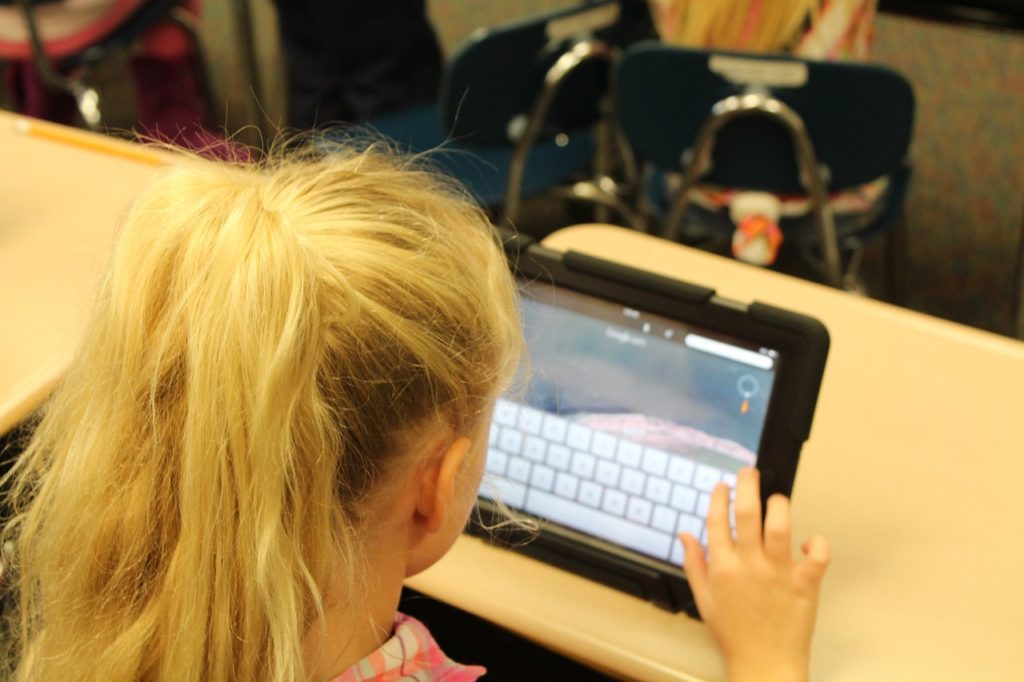Bien que l’application Desmos soit principalement associée au domaine des mathématiques, l’outil pédagogique en ligne a beaucoup évolué depuis sa création et peut facilement être utilisé dans toutes les disciplines scolaires, et ce autant au primaire qu’au secondaire.
Frédéric Ouellet, conseiller pédagogique au Centre de services scolaire de Kamouraska-Rivière-du-Loup, et Stéphanie Rioux, conseillère au service national du RÉCIT, domaine de la mathématique, de la science et des technologies, utilisent Desmos depuis de nombreuses années.
« Nous voulons défaire le mythe que Desmos se limite à la mathématique. L’application offre plusieurs possibilités pour les enseignants de tous les niveaux scolaires », affirme Stéphanie Rioux. C’est ce qu’elle a démontré, avec son collègue, lors de l’atelier Desmos pour toutes les disciplines, présenté dans le cadre du récent colloque de l’AQUOPS.
Si, au départ, l’application se limitait à une calculatrice graphique, spécifiquement conçue pour les élèves de mathématique au 2e cycle du secondaire. Au fil du temps, elle a énormément évolué, tout particulièrement au cours de la dernière année. Notez que Desmos est entièrement gratuit pour tous. Il suffit d’avoir un compte Desmos ou un compte Google pour y accéder. Des liens sont d’ailleurs possibles avec Google Classroom.
Activités interactives en temps réel
C’est la fonction « classe virtuelle » de Desmos (student.desmos.com et teacher.desmos.com) qui permet aux enseignants de créer de multiples activités interactives pour les élèves (association de cartes, choix de réponse, réponse ouverte à rédiger, éléments à placer sur une image (carte ou autre), ordonnancement, etc.).

Et attention, classe virtuelle ne veut pas dire « à distance », comme l’ont précisé les deux présentateurs. Les activités peuvent très bien se vivre en classe.
D’ailleurs, Stéphanie Rioux précise que Desmos est un outil visant à stimuler des discussions, à animer une activité précise, bref à dynamiser l’enseignement en direct. Certaines fonctions sont spécifiquement conçues à cet effet.
L’enseignant peut notamment mettre une séquence d’activités « en pause » afin que les élèves arrêtent de travailler pendant un moment (pour donner une explication supplémentaire, par exemple). Il peut sélectionner une activité et celle-ci apparaît instantanément sur l’écran de tous les élèves. Il peut limiter le travail des élèves sur quelques activités en particulier pendant un laps de temps. Il peut isoler des réponses, les rendre anonymes et les projeter pour tous afin de susciter une discussion de groupe.
Finalement, l’enseignant a accès à un tableau de bord qui lui donne un portrait en temps réel de la réalisation des activités (quel élève complète quelle activité, qu’a-t-il complété jusqu’à maintenant, etc.). Il peut également donner une rétroaction écrite à l’élève. Pour le moment, celle-ci est unilatérale, mais les élèves pourraient bientôt avoir la possibilité de répondre à l’enseignant, selon Frédéric Ouellet.
En complément :
Plusieurs ressources sont présentées dans la présentation Desmos pour toutes les disciplines, dont :
· Autoformation Premier pas avec Desmos sur Campus RÉCIT
· Groupe Facebook Pédagogues Desmos
· Groupe Facebook Les maths autrement
Formation CréaCamp sur le créateur d’activités Desmos, en direct le 16 avril de 9 h à 12 h sur inscription.






